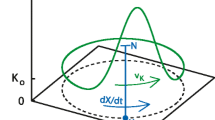Abstract
Time-minimizing migrants should leave a stopover site if the instantaneous speed of migration drops to the average speed of migration in the environment. This argument has been used in two different ways: either there is local variation in the fuel deposition rate and a fixed expected speed or there is global variation in the fuel deposition rate, i.e. locally experienced variation represents global variation along the route. The first case leads to a far steeper relationship between departure load and fuel deposition rate than the second case. So far, data on departure loads have mainly been analysed within the concept of local variation of the fuel deposition rate and the result that the observed slopes are much lower than predicted has been explained by changes in the expected speed along the route or by individual differences in the expected speed. We show here that the observed relationships generally fall close to the predictions for global variation. We propose that migrants use a behavioural rule which projects the current experience into the future and therefore interprets local variation as global variation.
Similar content being viewed by others
Author information
Authors and Affiliations
Additional information
Received: 3 April 1999 / Received in revised form: 22 April 1999 / Accepted: 26 April 1999
Rights and permissions
About this article
Cite this article
Weber, T., Fransson, T. & Houston, A. Should I stay or should I go? Testing optimality models of stopover decisions in migrating birds. Behav Ecol Sociobiol 46, 280–286 (1999). https://doi.org/10.1007/s002650050621
Issue Date:
DOI: https://doi.org/10.1007/s002650050621




